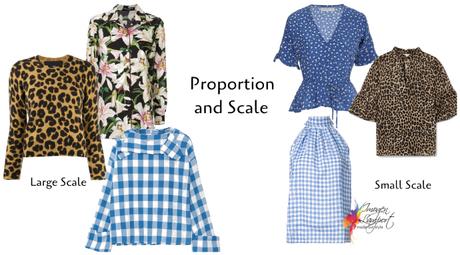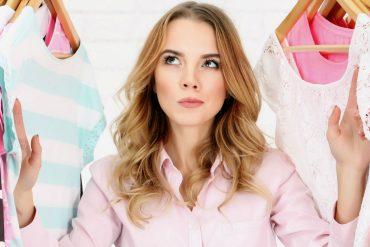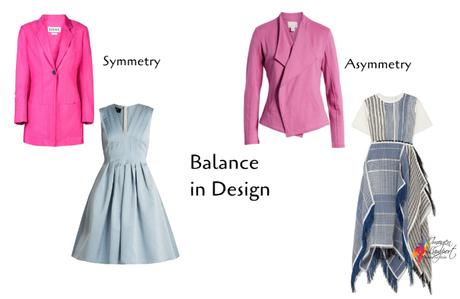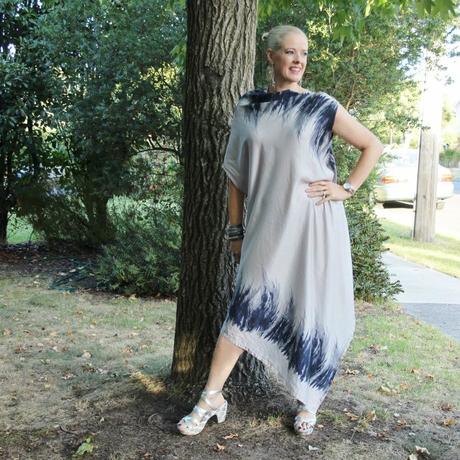This is a loaded question, as taste, is very personal. One person's beautiful is someone else's ugly. That said, there are some overarching design principles that have been shown to aid in more people finding an outfit or garment aesthetically pleasing, and that's what we'll be looking at here.
Did you know that something that is aesthetically pleasing will make you feel happier? There are certain things that have been shown in studies to bring us more joy (I wrote about them here). And in fact, we associate aesthetically attractive items as higher in quality too!
Given that your attire is something that everyone else has to look at all day, why not make it something that is aesthetically pleasing, not just for yourself, but for everyone you interact with as well.
Many of the style guidelines relate back to aspects of design that help make a garment or outfit aesthetically attractive include aspects that create harmony when put together. Our sense of sight, touch, smell, and hearing are all taking in information about what you wear and making decisions based on the information your senses feed back to you.
Aesthetics of Sound
Traditional aesthetics of sound include aspects such as the loudness, pitch, breat, repetition, melody and patterns created by sounds.
Clothes make noises. Swishing or rustling, of fabrics rubbing together or moving. Jangling of metallic jewellery clanking together. How you feel about the sounds your outfits make is personal. I know that I dislike my clothes making noise, though others have told me they enjoy the sounds of their jewellery tinkling (notice how for me it's clanking, and for others it's tinkling ...).
Have you thought about how your clothes sound? What are your personal preferences with this aspect of attire?
Aesthetics of Smell
You may be thinking smell, seriously? You may not realise it, but some fabrics have less pleasant odours, and others have very pleasant ones. You'll know when you try on a garment that smells off to you, or when one smells nice. Most clothes don't have strong odours, but some do and of course how much fabrics hold body odour and start to smell after wearing is a whole topic around this on its own!
And then, of course, there is the whole topic of perfume which forms part of your overall image (and you can read up here on the topic of perfume and personal style).
Aesthetics of Touch
Touch is another aspect of clothing that is often not taking into enough consideration (I know this from having done many wardrobe edit sessions and discovering garments in almost every wardrobe that are not worn because of how they feel. What aspects of garments play into your sense of touch? Think texture, weight, softness and the temperature of fabrics. How do they feel on your skin? How do they move with your body (or don't move and make you feel constricted and restricted? Has the fabric got a stiff drape or a soft drape? Which do you prefer?
- If you run hot, you'll be looking for fabrics that keep you feeling cooler.
- If you run cold, you'll be looking for fabrics that keep you warm.
Quite often when I see wardrobes that are not stylish, it's because this is the only aesthetic that the wearer is considering. How the garments feel on, whether their touch is aesthetically pleasing, whilst ignoring the other aspects of aesthetics and their other senses. Yes, the touch and feel of clothes are important, but so are the other aesthetics, particularly of vision, since that's the one that others experience (as they are not touching your clothes, the way you are).
Aesthetics of Vision
This is the most common aspect of clothing that we talk about and people are looking for advice about. There are a few design principles that are widely used to make items more aesthetically pleasing: harmony, rhythm, balance, proportion, emphasis - the key principles of aesthetics in visual design.
Let's look at each in turn.
Balance
Harmony and balance can be created by using concepts of symmetry (both sides of the garment are mirror image) and asymmetry (more exciting than symmetrical or formal balance), or radial balance (where the design details of a garment emerge from a central focus point).
When thinking about symmetry and asymmetry with relation to you, it's worthing repeating the design lines inherent in you. So if you have an asymmetrical body (for example one shoulder higher than the other) or face (one high a little different from the other or a crooked nose), then wearing clothing with asymmetrical details or features will work well.
Good asymmetrical design is balanced in itself, notice how in my Alfia Galimova dress, the short side of the skirt hem is balanced by a longer sleeve and the pattern at the top and bottom of the dress are symmetrical and balanced.
Rhythm and Movement
Using repeated lines, shapes, colours, textures or patterns to move the eye around the garment or outfit.
These design elements can be regular (repeating at the same interval) or irregular (same element, irregular repetition).
Examples Above:
- You can see there is the repeating regular contrast of the fringe layers on the dress on the left, which will also move when the wearer is moving creating added variety and interest to the garment.
- The shoe in the centre with is juxtaposed stripes and spots, the spots moving the eye up and down the shoe.
- Adding a colour accent to an outfit - the black and white dress with the red accessories relating to the necktie of the dress.
- And then the sweeping irregular wave pattern on the dress above right that moves your eye from bottom to top ending up at the face.
Proportion and Scale
The size of the various design elements must work together and complement each other. This is why large jewellery makes a large bust appear smaller (and small jewellery makes it appear larger) and why petite women are so easily overwhelmed by too much fabric and slightly too long sleeve, the overall scale of the garments and accessories are not in proportional balance with the scale of the wearer (or their features).

You also have the principle of volume, which is about the proportions of volume in any outfit and not wearing too much volume in one outfit.
Of course, the other important aspect of proportions is the golden mean proportion, found in nature and replicated in so many things we find beautiful and can be used to create more attractive outfits.
Emphasis and Focus
Drawing attention and creating focal points. This is such an important and often underutilised concept of creating outfits. We can get stuck on the Unity element (figure flattery) and not stop to add in the emphasis or create focal points (the distraction, so required to create an overall fabulous outfit and when you've become a true fashion magician!).
Here emphasis can be created by embellishment, ruffles, colour, pattern, exaggerated scale, fabric choice and the like. Plus of course, you have the use of accessories such as shoes, jewellery, scarves and hats.
Harmony and Unity
The final piece in the aesthetic handbook is Harmony and Unity.
Here you're looking at the overall garment and outfit, does it work together with all the design elements working as a whole. Each element enhancing other elements of the overall design. Unity is the coherence of the whole.
Unity + Variety = Harmony
Unity - everything working together - figure flattery - the silhouette works for your body and features (which you can find out about in my 7 Steps to Style program). The style lines are consistent. Textures should be used in a pleasing way, colours are combined attractively.
Variety - interesting in the design, it's not dull or boring with no focal point, there is something to hold the viewer's attention.
You can see from the example above the elements of rhythm, pattern, asymmetry and symmetry, interest and variety, harmony with colours, proportions of design elements all working together in the outfit.
Real-Life Example of Aesthetics of Design at Work
In this simple jeans outfit above, you can see I've repeated the colour of my jeans in my shoes, and also the level of refinement.
Then my top has a graduated symmetrical print (balance) but with an asymmetrical design that creates variety and interest. I've repeated the shape of the spots in my necklace but in an alternate colour for variety and emphasis, using similar proportion beads to the larger dots on the fabric of my top.
Having more of the lighter colour of the top near my face and hair (repeating the value of my ideal value close to my face) and then it graduating to a darker colour that then makes the contrast between top and jeans medium value, which works for my medium value contrast and allows me to wear my darker jeans more easily.
This outfit also works with my aesthetic needs for softer fabrics that are comfortable and move with my body, and nothing smells bad either or makes noise as I move (which is something I really don't like).
The Aesthetics of Beauty and Style and How They Relate to Fashion
The Right Perfume for You
All My Best Tips and Inspiration for Putting Together Stylish Outfits
Linking Up to: Not Dressed as Lamb, Style with a Smile, Thursday Fashion Files, Ageless Style, Visible Monday




